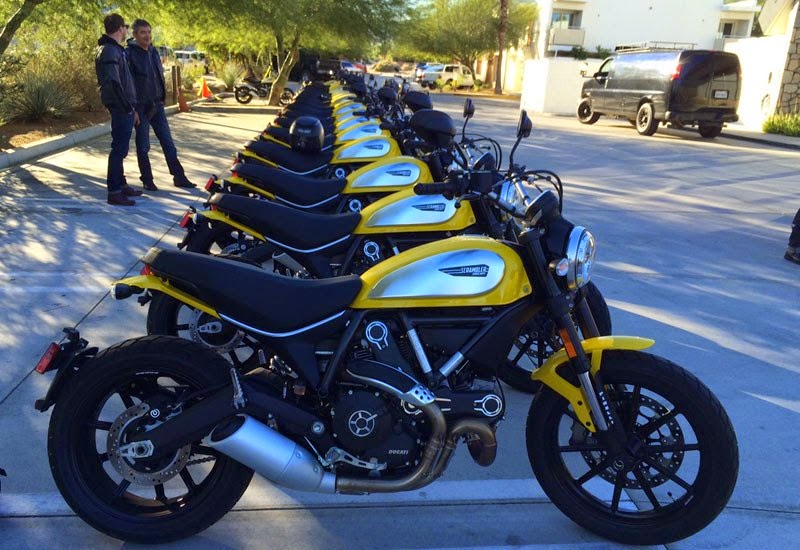Suzuki will be launching all new superbike in 2016 with radical VVT engine
The reinvention of Suzuki will take another massive step forward at the end of this year when the firm is expected to unveil an all-new replacement for their flagship GSX-R1000 superbike. Thirty years after the Japanese firm established a new sportsbike standard with the now iconic GSX-R750, they look set to stick another pin in the graph of sportsbike development with their 2016 superbike.
The reinvention of Suzuki will take another massive step forward at the end of this year when the firm is expected to unveil an all-new replacement for their flagship GSX-R1000 superbike. Thirty years after the Japanese firm established a new sportsbike standard with the now iconic GSX-R750, they look set to stick another pin in the graph of sportsbike development with their 2016 superbike.
Rumours from Japan have pointed to a new bike being in development for some time, but MCN is now certain that key patent applications claiming to detail elements of Suzuki’s GSX-RR MotoGP bike actually relate to what will become the GSX-R1000 L7.
A decade has passed since Suzuki released the now legendary K5, which achieved an unprecedented balance between road and track ability. And all the rhetoric from the factory suggests that the firm is no less committed to this delicate balancing act today.
At the heart of the new 1000 will be a revolutionary new engine boasting variable valve timing – a first on a pure superbike. Patents confirm the system is no clone of other firms’ VVT efforts, but uses a variable inlet valve timing and lift system, featuring an intake camshaft with multiple cam profiles. The cam profiles are altered by sliding the lobes sideways along the shaft itself, enabling the motor to react to rpm and rider input, delivering optimal power and torque throughout the rev range.
This isn’t a ploy to detract from a lack of power either. Indications suggest the new engine will produce close to 200bhp. It’s almost certain not to exceed the double ton though, due to a ‘gentlemen’s agreement’ between the big four Japanese manufacturers (although Kawasaki it with their H2).
Rather than join Kawasaki in busting the 200bhp ceiling, Suzuki are more likely to chase improvements in overall balance by reducing the kerb weight to under 200kg, sticking to the K5’s ethos of developing the best handling superbike on the market.
Intrinsic in this quest will be new chassis technology, which is expected to borrow heavily from the GSX-RR GP bike. Patents show the main frame spars set closer together, and extending over the top of the engine to deliver a narrower waist, for tighter packaging.
Electronic aids are certain to get a boost. Bosch’s ‘cornering ABS’ system is almost guaranteed, while Suzuki have long championed rider modes, and are sure to increase the range and remit of these to work with the new VVT motor. With the V-Strom 1000 and new GSX-S1000 duo sporting traction control, it’s certain that an evolved package – most likely developed on the GP bike – will make its way on the L7. The MotoGP project team told MCN last year that the RR’s engine configuration was aimed at assisting road-going superbike development for engine, chassis and electronics, and it’s no coincidence that the two projects are running so closely in development.
What’s less clear is whether Suzuki will pursue semi-active suspension or Bosch’s Inertial Measurement Unit (already in use on the new Yamaha YZF-R1and Ducati 1299 Panigale). Suzuki’s mantras of affordability and inherent handling stability seem to suggest engineering excellence is preferred over electronic intervention.
At this stage it’s impossible to say how the new GSX-R will look, as all the patents shroud the new technology in outlines of the existing bike, but it’s inconceivable that Suzuki would overlook the MotoGP bike’s allure. While it would require a lot of work to integrate the required lighting and other road garb into the design, it’s logical to assume that there will be a strong family resemblance to the RR – which moves the GSX-R family aesthetic on into a new generation.
While the new L7 is almost certain to be revealed at the Milan show on November 19-22, MCN expects that it won’t arrive in dealers until mid-to-late 2016. Why so late? Well actually it’s early. Dealers suggest that the new bike wasn’t expected to emerge from Japan until 2017, but has been brought forward to compete with the recent glut of ballistic superbike releases.
There’s also a high probability that the new bike will be highly competitive on price. During our visit to the Japanese factory last year the head of product planning went to great lengths to reinforce the firm’s commitment to affordable new bikes. While it’s unlikely to be priced in line with the existing model’s £10,599-£11,299 range, there’s a strong probability of it arriving at sub-£13,000.
Suzuki GB General Manager, Paul De Lusignan, refused to confirm the arrival of a new superbike, but told MCN: “The GSX-R1000 is an important model for us in the UK, and for Suzuki globally. It’s an iconic machine. We are continually developing it both at the factory and in conjunction with our race teams, not least of all our MotoGP team. New technologies are constantly being tested and developed, with a view to enhancing the production version, but we are not in a position to confirm timings on any new or updated models that may be in development.”
Of course, the final piece of the puzzle could take the form of a higher spec, higher priced version, trading off the GP bike’s RR designation, but there’s no indication this is part of the current plan. Regardless, the arrival of an all-new GSX-R1000 is a tantalising enough prospect all on its own.










.jpg)










